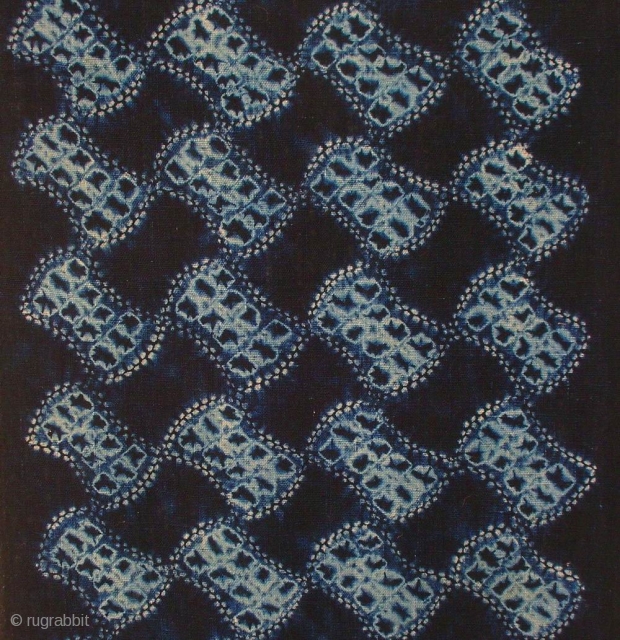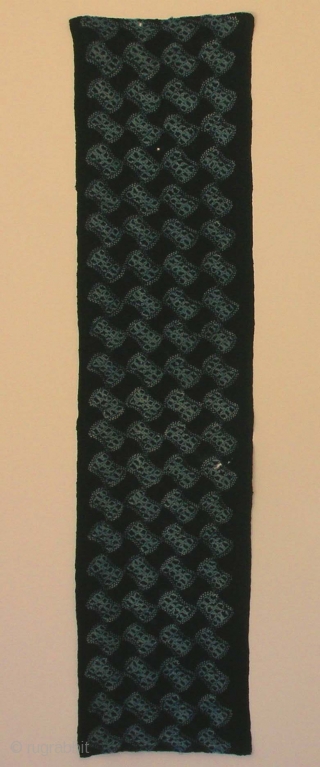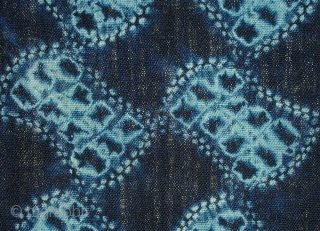Back
‘bundou- tsunagi’ shibori cloth , Japan, Meiji (c.1880), 139x33cm. The common English translation of the Japanese word shibori is "tie-dye"; however, a more accurate translation is "shaped-resist dyeing," which describes the inherent patterning process of manipulating the two-dimensional cloth surface into three-dimensional shapes before compressing them to dye. Diverse shibori techniques are used to obtain different patterns, and sometimes they can be combined to obtain a certain result. Here we have a so-called bundou-tsunagi (weight chain) pattern masterfully obtained by the dyer. One has to bear in mind that it takes a great skill to result in a regular lattice design with this technique. In fact, most of the shibori cloths show a ‘casual’ overall display of patterns. a lovely thing in most cases, more easy to obtain though. Cotton looks to be hand-spun and hand-woven. Condition is good, with just a couple of tiny holes. Recommended.
price:
SOLD
- Home
- Antique Rugs by Region
- Category
- Profiles
- Post Items Free
- Albums
- Benaki Museum of Islamic Art
- Budapest: Ottoman Carpets
- Gulbenkian Museum
- Islamic Carpets. Brooklyn
- Islamic Textiles. Brooklyn
- Konya Museum: Rugs
- MKG, Hamburg
- MMA: Caucasian Carpets
- MMA: Mamluk Carpets
- MMA: Mughal Indian Carpets
- MMA: Ottoman Carpets
- MMA: Safavid Persian Carpets
- MMA: Turkmen Rugs
- McCoy Jones Kilims
- Ottoman textiles. Met
- Philadelphia Museum
- Rugs and Carpets: Berlin
- Seljuqs at the Met
- TIEM, Istanbul: Carpets
- V&A: Classical Carpets
- Vakiflar Carpets: Istanbul
- Baluch Rugs: Indianapolis
- Gallery Exhibitions
- Jaf an Exhibition
- Alberto Levi Gallery
- Andean Textile
- Christie's London: 2016
- Francesca Galloway
- HALI at 40
- ICOC Washington, DC 2018
- Jajims of the Shahsavan
- London Islamic Week April, 2018
- Mongolian Felts
- Navajo Rugs: JB Moore
- Persian Piled Weavings
- SF Tribal & Textile Art Show 2020
- SF Tribal 2019
- Sotheby's: C. Alexander
- Turkish Prayer Rugs
- Turkmen Main Carpets ICOC 2007











